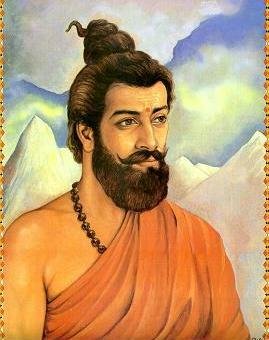What Is Yoga?
Yoga is enigmatic in that it is both a vast field of study and an expression of the deepest part of our own being. Yoga is a discipline that requires years of dedicated effort; it is also the art of effortlessness in which nothing needs to be done. Yoga is an ancient science developed by people of great wisdom in the distant past; it is also our everyday life and as near to us as our own breath. Yoga is a philosophy and psychology of great depth; it is also as simple as living a life of truth and freedom.
Because of its multifaceted nature, the definitions of yoga are also multifaceted. Rather than seeing these as contradictory, we can compare them to the Indian story of the blind men who were asked to describe an elephant. Each touched the elephant in a different place and came up with a different description. All were true, but each failed to describe the entire elephant. By looking at a number of different aspects of the definition of yoga, we will be able to better understand this multifaceted gem.

Yoga comes from a Sanskrit word yuj, meaning to link or join together. The root word is related to our English word yoke, as in the joining of two oxen to pull a cart. When we discuss what exactly is being linked together, it takes us immediately to the very heart of yoga. Yoga makes a distinction between our everyday self, the self that includes our physical body and our personality, and a larger or cosmic Self, the entire web of creation of which we are a small strand, a drop in the infinite ocean of life. This larger Self is usually distinguished from the smaller self by the capital S at the beginning of the word. The individual self is sometimes referred to as Jiva, while the cosmic Self is called Brahman. Yoga brings these two together as a single unity. When fully identified and integrated with the cosmic Self, the individual self is called Atman.
From the perspective of the universal Self, yoga is actually linking together two things that have never been separate. From the perspective of Brahman, all of life is one unity with no separation anywhere. The function of all the various techniques of yoga is to bring us into connection with and help us remember and become increasingly aware of a unity that is already always present.

A main resource for defining and understanding yoga is Patanjali’s Yoga Sutras. These 195 short aphorisms compiled some 2,000 years ago give a concise and, at the same time, in-depth portrait of the system of yoga as a whole. In the second sutra, yoga is defined as control of the modifications of consciousness. These modifications are all the thought patterns and emotional patterns that keep us tied to the illusion of the limited self and keep us separate from an experiential understanding of the larger Self.
So, yoga is the vehicle that helps us see through patterns of thought and emotion that obscure the experience of unity. Yoga is also the experience of unity itself. Yoga as a vehicle is important because we use it to get where we’re going. Yoga as the experience of unity is fundamental since this is our ultimate destination. It is important not to confuse the vehicle with the destination. In spiritual lore, this mistaking the path for the goal is expressed as confusing the moon with the finger pointing toward the moon. The vehicle is fundamental for the journey, but at some point we’ll need to leave the vehicle to arrive fully at our destination.

*extracted from the Teacher Training Manual
To understand the foundations of Yoga Therapy
To understand the foundations of Yoga Therapy, we can use the model of a structure supported by four pillars:
- Yoga Chikitsa Darshana – The vision of Yoga Therapy
- Yoga Chikitsa Marga – The path or process of Yoga Therapy
- Yoga Chikitsa Sadhana – The tools, techniques and methods of Yoga Therapy
- Kaivalya – The result of Yoga Therapy

Yoga Chikitsa Darshana – The Vision of Yoga Therapy
The Yoga Sutras of Patanjali form the basis of the Yoga Therapy vision and the first four sutras are the essence of Integrative Yoga Therapy for health and healing. The translation of these sutras below reflect the Yoga Therapy perspective:
- The teaching of Yoga begins when we become conscious of the unsatisfying and destructive nature of a life out of balance;
- Yoga is a process of harmonizing all that is out of control and confusing in our lives, including fears and desires, so that we can stop walking in circles;
- We may therefore rest in our true nature when we experience the peace and joy that provide us with abundance and a deeper sense of living;
- We will continue our search and our effort without encountering true satisfaction and, in the process, create stress patterns and suffering that lead us to imbalance and illness. The rest of the sutras in the first chapter expand upon this darshana, or general vision.
In the second chapter, there’s a clearer approach on health and illness according to the Model of the Five Kleshas. The Kleshas describe the process of illness that occurs when we’re not in a yogic state. The Kleshas can be understood within the context of Yoga Therapy as the following:
- Avidya – lack of understanding of our true nature. Avidya, or ignorance of the truth of unity, is the source of all forms of illness. Ignorance refers here to a lack of understanding that all of life is interconnected and that each one of us is an integral part of the web of life. Avidya is the inability to perceive the larger dimension in relation to oneself, one’s relationships and the world as a whole.
- Asmita – egoism, a natural consequence of avidya, a way of thinking and acting in which the individual is the center of the world and the world revolves around him/her.
- Raga – Desire, wanting to achieve, obtain, secure, attach.
- Dvesha – Aversion, displeasure, anger, the act of avoiding all that represents a threat. Attachment and aversion are a natural consequence of the individual ego that resides in separation, which on the one hand, results in competition and attachment and on the other, fear and anxiety.
- Abinivesha – Fear of death, underlying existential anxiety. Abinivesha is sometimes defined as “fear of death”. In a larger sense, it’s the existential anxiety that accompanies life without a clear sense of meaning and purpose. Abinivesha is the feeling of falling into a trap, of being on a narrow cliff and falling between life and death, with disaster looming.
The Yoga Sutras offer an integrated analysis of health and disease:
- Heya – the source of disease is samsara, or a life lived as separation.
- Hetu – the cause of samsara is avidya.
- Hanopaya – the solution is self-knowledge through the practice of Yoga.
- Kaivalya – the final cure is self-knowledge.

Yoga Chikitsa Marga – The path of Yoga Therapy
The path of Yoga Therapy is based on Ashtanga Yoga or the 8 Steps of Yoga. Each step is essential to the Yoga Therapy process so that complete healing is achieved. In relation to Yoga Therapy, these steps, or limbs, can be defined as:
- Yamas – The understanding of the importance of ethics, of values and qualified actions in the creation of holistic health.
- Niyamas – Precepts that emphasize the importance of aspiration and fundamental spiritual practice for the health of the body-mind-spirit.
- Asana – Appropriate structure, posture and corporal attitude that promotes health.
- Pranayama – The function of breath and the flow of vital energy (prana) with relation to health.
- Pratyahara – Abstraction of the senses in relation to the external world to make space for internal observation of the states of balance and imbalance and the removal of disease-causing patterns.
- Dharana – The practice of training and directing the mind toward states of health and balance.
- Dhyana – The experience of the whole being resting in its true nature as harmony and balance.
- Samadhi – Integration of the individual with the Whole. State of total health because the Whole is complete by nature; by aligning with this state, there is health on all levels.
Yoga Chikitsa Sadhana – The Practices of Yoga Therapy
Many of the practices of Yoga Therapy are founded on the ancient Hatha Yoga texts, such as the Hatha Yoga Padipika (1300 B.C). These texts are considered a preparation and foundation for Raja Yoga, a reference to the Yoga Sutras, and emphasize the therapeutic benefits of various Yoga practices.
In the introductory sutras, the text reaffirms its intention: “Hatha Yoga is the sanctuary for those who suffer from all types of afflictions.” Hatha Yoga is the foundation for the practices of Yoga Therapy. As the student progresses, meditation comes to play an essential role.
The Yoga Sutras describe the nature, process and techniques of meditation, as well as spiritual experiences that occur during meditation. A central point that’s explored in the Yoga Sutras is that the spiritual experiences aren’t the goal of Yoga, which, in truth, consists of self-knowledge.
Therefore, health and healing are biproducts of the integral process of transformation that occurs through the practice of Yoga. For a technique to have the desired benefit as therapy, it should be firmly anchored in the vision of the path of Yoga Therapy without losing sight of its goal.

Kaivalya – The Result of Yoga Therapy
Vision, path and technique come together to produce the integration of mind and spirit which is the fundamental basis of Yoga Therapy as healing.
Within this vision, specific areas or systems in the body receive special attention, but the health and cure as a whole occur when all the steps of Yoga are integrated in a program for transformation that embraces every aspect of the individual: physical, energetic, psycho-emotional, intuitive and spiritual.
Samkhya Philosophy, Foundation of Yoga
As a philosophical system, yoga has its basis in a philosophy called Samkhya, which means “list” or “enumeration.” Samkhya is a description of the universe and gives a detailed account of 24 different elements from which it is composed. Some of the elements contained within this description of the universe are the five great elements that make up all matter: earth, water, fire, air, and space.
Samkhya also lists the different levels of mind as elements within the created universe. These include citta, which could be defined as consciousness in the broadest sense. Next comes buddhi, which is our faculty of discrimination and higher wisdom. The conventional mind of thought and emotion is called manas, and that part of ourselves that identifies us as an individual being is called ahamkara,which can be related to the ego.
The Samkhya view of the universe corresponds well to the description of the universe found in modern physics. Both see the universe as essentially energy that has the appearance of matter in differing compositions, and both believe the universe originated from an initial unified source. In the case of physics, the beginning of the universe is the Big Bang. The same idea is found in Samkhya, but the essence of the universe in Samkhya philosophy is seen as a unified consciousness or cosmic intelligence from which all matter evolves.

When we begin to explore Samkhya philosophy together with the insights of quantum physics, we come up with some interesting possibilities. From this perspective, we are the universe. Each of us is a living cell within a living organism, which is our Earth. This means that we have always been here in some form since the beginning of the universe and will also continue to exist indefinitely.
When we extend these ideas to the history of yoga, we come up with a completely new approach. Rather than the history of yoga being a series of dates and names of spiritual texts and spiritual teachers, it becomes the story of our own lives. Each of our lives becomes a microcosm of the creation and evolution of the universe. In this way, the universe story, including the development of spirituality, becomes our own life story.
*extracted from the Teacher Training manual





